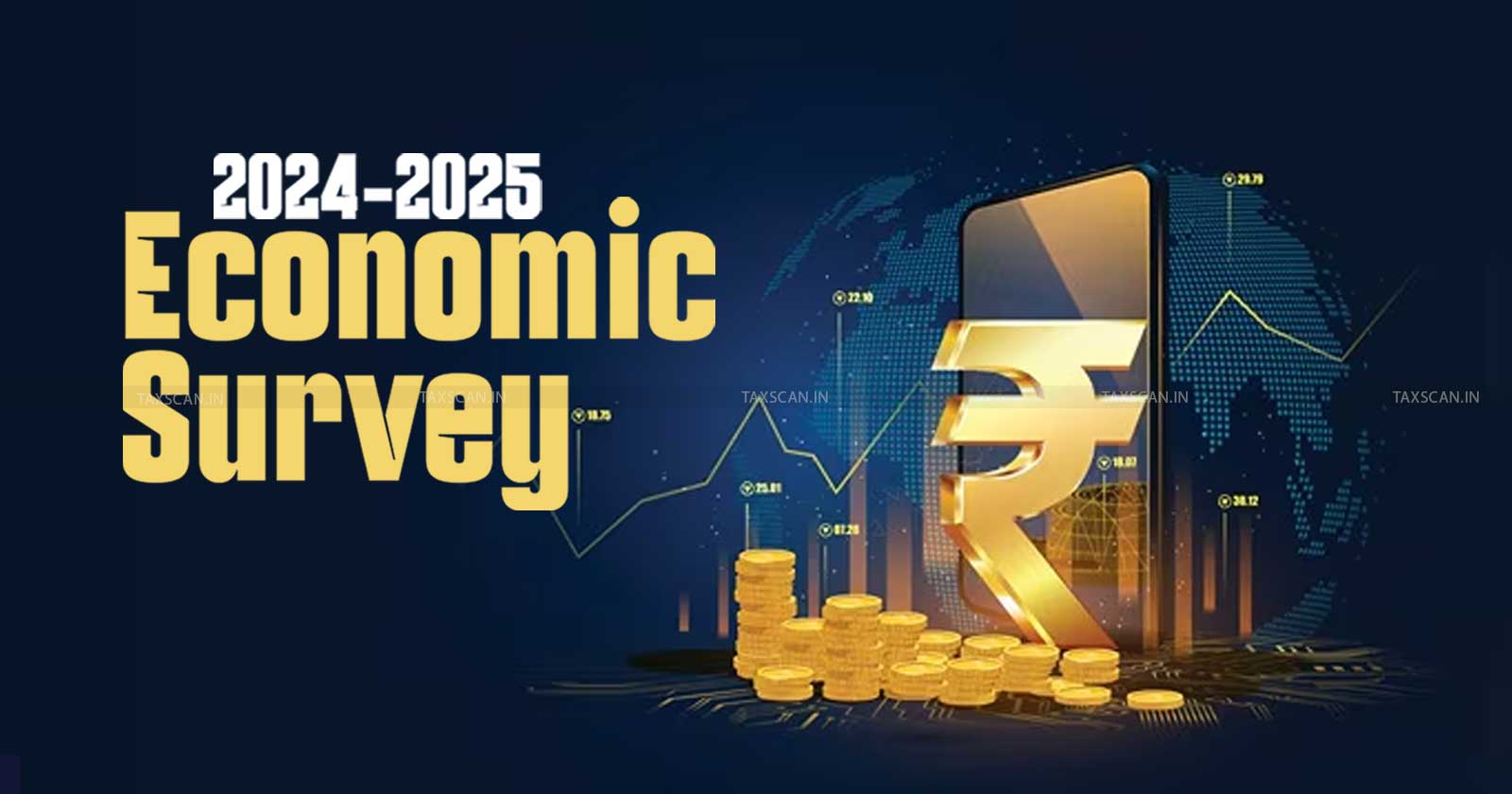Economic Survey 2024-2025: A Deep Dive into the Financial Progress Report
India’s GDP is expected to grow between 6.3% and 6.8% in FY26

Economic Survey 2024-2025 – Financial Progress Report – Economic Survey – taxscan
Economic Survey 2024-2025 – Financial Progress Report – Economic Survey – taxscan
India’s Economic Survey for 2024-2025, tabled by Union Minister of Finance and Corporate Affairs, Smt. Nirmala Sitharaman, offers an in-depth look into the country's economic performance and projections. Despite the global economic uncertainty, the report highlights steady growth in multiple sectors, signaling resilience and optimism for the future.
Projected Growth and Economic Indicators
India’s GDP is expected to grow between 6.3% and 6.8% in FY26, reflecting a solid performance. For FY25, the real GDP growth is estimated at 6.4%, which is in line with the country’s long-term average. This growth is supported by healthy contributions from agriculture, industry, and services. The Survey also notes that real Gross Value Added (GVA) is expected to grow by 6.4% in FY25, indicating a broad-based expansion in economic activity.
Get Complete Coverage on Budget 2025-26
Private final consumption expenditure, particularly in rural areas, is projected to grow by 7.3%, which bodes well for the middle class. The industrial sector, which is forecasted to grow at 6.2%, is primarily driven by robust performances in construction and utilities. Additionally, the services sector is expected to grow at 7.2%, propelled by strong activities in financial services, real estate, and public administration.
Inflation and Fiscal Health
Retail inflation, which had been a concern for many households, softened to 4.9% in April-December 2024, down from 5.4% in FY24. The government's effective handling of inflation is expected to bring consumer price inflation in line with the Reserve Bank of India’s target of 4% by FY26.
On the fiscal front, the government’s capital expenditure (capex) saw an 8.2% growth from July to November 2024, which is good news for infrastructure development. This will not only create jobs but also lead to improved living standards, particularly for the middle class, who directly benefit from better roads, transport, and utilities.
Exports and Foreign Investments
India’s exports grew by 6.0% YoY between April and December 2024, with a notable 12.8% increase in services exports, which contributes significantly to the country’s economy. The government’s continued focus on services has made India a key player in global markets.
Get Complete Coverage on Budget 2025-26
Foreign Direct Investment (FDI) inflows also rose by nearly 18% YoY, further boosting investor confidence. This growth in foreign investments can have a ripple effect on the job market, potentially benefiting the middle class with more opportunities for employment and economic stability.
Sectoral Growth
The agriculture sector, which is crucial for rural India, is expected to grow by 3.8% in FY25, with a record Kharif foodgrain production projected at 1647.05 lakh metric tonnes. This increase in food production could help maintain food prices and support rural income, which, in turn, impacts the broader economy.
The industrial sector’s growth rate is expected to remain steady at 6.2% in FY25. Despite some challenges such as weak export demand and monsoon disruptions, India continues to perform well in manufacturing, with a positive outlook for 2025. This stability is crucial for job creation and sustaining domestic industries, benefiting ordinary citizens in terms of livelihood.
Renewable Energy and Infrastructure
The Survey highlights a significant increase in renewable energy capacity, with a 15.8% growth in solar and wind power capacities by December 2024. This green transition is important not only for India’s sustainable future but also for lowering energy costs in the long run, which could directly benefit the middle class, particularly with rising electricity demands.
Get Complete Coverage on Budget 2025-26
Infrastructure development is also progressing, with major improvements in railway connectivity and port efficiency. As the government continues to invest in these areas, middle-class citizens can expect reduced travel times, improved logistics, and greater access to goods, which could help lower the cost of living.
Labor Market and Employment
India's labor market shows positive signs, with the unemployment rate dropping to 3.2% in 2023-24, down from 6% in 2017-18. This drop is a result of the government's focus on formalization and post-pandemic recovery. The improved job market could lead to better opportunities for the middle class, with more people entering the workforce in stable, formal jobs.
The rise in the adoption of artificial intelligence (AI) is expected to drive economic growth, but the Survey also stresses the importance of addressing the challenges it may pose, such as skill gaps and employment displacement. There is a clear call for collaboration between government, industry, and academia to ensure that AI adoption benefits everyone, including workers in the middle-income group.
Social Services and Government Initiatives
The government’s investment in social services is growing, with a 15% increase in expenditure on health and education from FY21 to FY25. This is encouraging news for middle-class families, who will benefit from better healthcare and educational opportunities. The government’s efforts in reducing out-of-pocket expenditure on health are particularly noteworthy, as they have dropped from 62.6% in FY15 to 39.4% in FY22.
Looking Ahead: Strategic Reforms
The Economic Survey emphasizes the need for deregulation to enhance ease of doing business, particularly in the SME sector. With the launch of the ₹50,000 crore Self-Reliant India Fund for MSMEs, the government is helping small businesses access capital to grow and create jobs. This move could have a ripple effect on employment opportunities for the middle class, with the growth of MSMEs potentially leading to more jobs in various sectors.
The Survey also stresses the importance of continued investment in infrastructure over the next two decades. With the government’s focus on enhancing connectivity and making it easier to do business, ordinary citizens can expect better public services, improved job prospects, and a more vibrant economy overall.
The Economic Survey 2024-2025 paints an optimistic picture for India’s future. The country is on a solid growth path, with steady progress across sectors like agriculture, industry, services, and infrastructure. However, the real test will lie in how these policies translate into tangible benefits for the ordinary citizen.
Get Complete Coverage on Budget 2025-26
The Middle Class Perspective
From the perspective of an average middle-class Indian, the report brings a sense of cautious optimism. We’ve seen some relief in inflation, improved job prospects, and better access to public services in recent years. The ongoing government focus on infrastructure development and green energy could make our daily lives easier and more affordable.
However, we’ll be closely watching whether the promises of job creation and lower living costs translate into real-world changes. As long as these positive trends continue, we can look forward to a more secure and prosperous future.
Support our journalism by subscribing to Taxscan premium. Follow us on Telegram for quick updates


